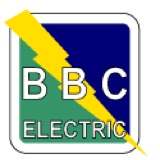Information
-
Work Order #:
-
Task #:
-
Conducted on
-
Location
-
Circuit:
-
Quad:
-
Nearest Hospital:
-
Supervisor:
-
Supervisor Contact Number:
-
Person/Crew Giving Job Brief:
-
Emp #:
-
Job Description/Overview:
-
Customer Job Briefing Required?
-
Provided by:
Briefing
SPECIAL PRECAUTIONS
-
Hazards above you
-
Equipment operation
-
Inspection of hydraulics, cables and motion controls
-
Winch line / buckets
-
Equipment checked and calibrated
-
Trenches and Excavations
-
Proper use of shoring
-
Test rubber gloves (inspect sleeves)
-
Pole condition
-
Inspect line hoses / blankets / hotsticks
-
Other work groups in area identified
-
Hot or cold weather concerns
-
Tool check
-
(Condition, right tool for right job)
-
Rubber goods properly placed
-
Cardox (CO2) system
-
Other Special Concerns (Give Details): (Note type, placement, and number of rubber goods used.)
MID-SHIFT JOB BRIEFING
-
Give Details:
JOB TASK
-
Reporting location / Yard review
-
Job assignments
-
Review job assignments, on site
-
Underground utilities located
-
Check for correct phases
-
Review work procedures
-
Safe working techniques
-
Lifting, twisting, bending, stretching
-
Proper PPC worn
-
Pre-flight inspection
-
Review Rules to Dig By
-
Confirm proper excavation
ZONE OF PROTECTION INFORMATION
-
Clearance Order Reviewed?
-
Minimum Approach Distance Requirements:
-
Clearance Order #:
-
Line / Feeder / Circuit #:
-
Voltage(s):
-
Equipment Lock Out Tag(s) needed:
-
Equipment #:
-
Equipment Lock Out Tag(s) placed:
-
Identified all potential energy sources including backfeed?
-
Zone of Protection established and identified with grounds and barriers?
-
Zone of Protection Accepted from Designated Authority?
-
Tested De-energized?
-
Vehicles grounded?
-
Equipment / Line Grounded?
-
Undispatched Grounds?
-
# of grounds:
-
Identified and discussed all points of potential energy release (gas, steam, mechanical, etc.)?
JOB SITE
-
Site Preparation Review Completed
-
Walk-down Completed
-
Atmospheric test done
-
Enclosed / Confined Space set up
-
Climbing Hazards Identified
-
Housekeeping / Self Made Hazards
-
Wildlife (bugs, insects, bees, etc.)
-
Wildlife (dogs, raccoons, rodents, etc.)
-
Uneven Surfaces
-
Ice, Mud and Snow
-
Vegetation (poison ivy / oak, hanging limbs)
-
Walkway barriers placed
-
Identify Slip, Trip, and Fall Hazards
-
Trenching Barriers in place
-
Discuss an Emergency Escape Plan
-
Leaking Equipment Identified
-
Spill Identified / Present
-
PCB's Present - Contaminated
-
PCB's present - Contained
-
SF6 Gas
-
Mercury
-
Waterway affected
-
Wetland(s) Area
-
Proper Pumping of Manholes
WORK AREA PROTECTION
-
Barriers Placed
-
Cones Placed
-
Signs Placed
-
Public & Pedestrian Safety in place
-
Flaggers being used
-
Street permits in place and reviewed
-
Spotters used for vehicle movement
-
Spotters used for boom / bucket movement
-
Typical Application Diagram #:
-
Traffic flow direction discussed
-
Traffic - Heavy
-
Traffic - Light
-
Intersection
-
Curved Roadway
-
Straight Street, Road, Alley, etc.
-
Description of other configuration(s)
-
Description
-
Other
-
Draw configuration - Note: T&S - Indicate a Safe Work Zone if present)
ACTION REQUIRED
-
EVERY CREW MEMBER IS EXPECTED TO BE ABLE TO EXPLAIN THE DETAIL OF THE JOB BRIEFING.
-
A job brief should promote discussions regarding Safety and the Comprehensive Work Plan to ensure successful completion of an assigned task. Explaining the hazards, changing conditions, and other relevant topics will allow you to complete your work task without incident. Consider "The Four Key Questions" during your discussion: What are the Critical Steps (things that need to go right)?, What are the Error Likely Situations (things that can go wrong)?, What is the Worst that can happen? (specific to the job), What defenses are in place?
-
Comprehensive Work Plan - Discussion Topics:
-
Scope of work to be performed:
-
Sequence of activities to complete the work:
-
Critical job steps - these MUST go right:
-
Work groups involved in the job:
-
Roles and responsibilities of each group:
-
Coordination between groups at the site:
-
Critical inspection or hold points for the work:
-
Does every crew member understand their assignment?
-
Other unusual / special conditions or topics for discussion:
-
ALL WORKER READINESS: Special health concerns
-
POST JOB BRIEFING (Completed at the end of each shift!)
-
CONDITION / SCOPE CHANGE: (Job Scope Change necessitates conducting a NEW Job Brief!)
-
Comments (Give Details)
-
Supervisor Quality Review of Job Brief (Initials):
-
Date
-
If the job cannot be performed safety STOP THE JOB and ask for assistance
Employee(s)
Employee(s) Present 1st Briefing
-
Employee
-
Employee
-
Employee
-
Employee
-
Employee
-
Employee
-
Employee
-
Employee
-
Employee
-
Employee
Employee(s) Present 2nd Briefing
-
Employee
-
Employee
-
Employee
-
Employee
-
Employee
-
Employee
-
Employee
-
Employee
-
Employee
-
Employee











